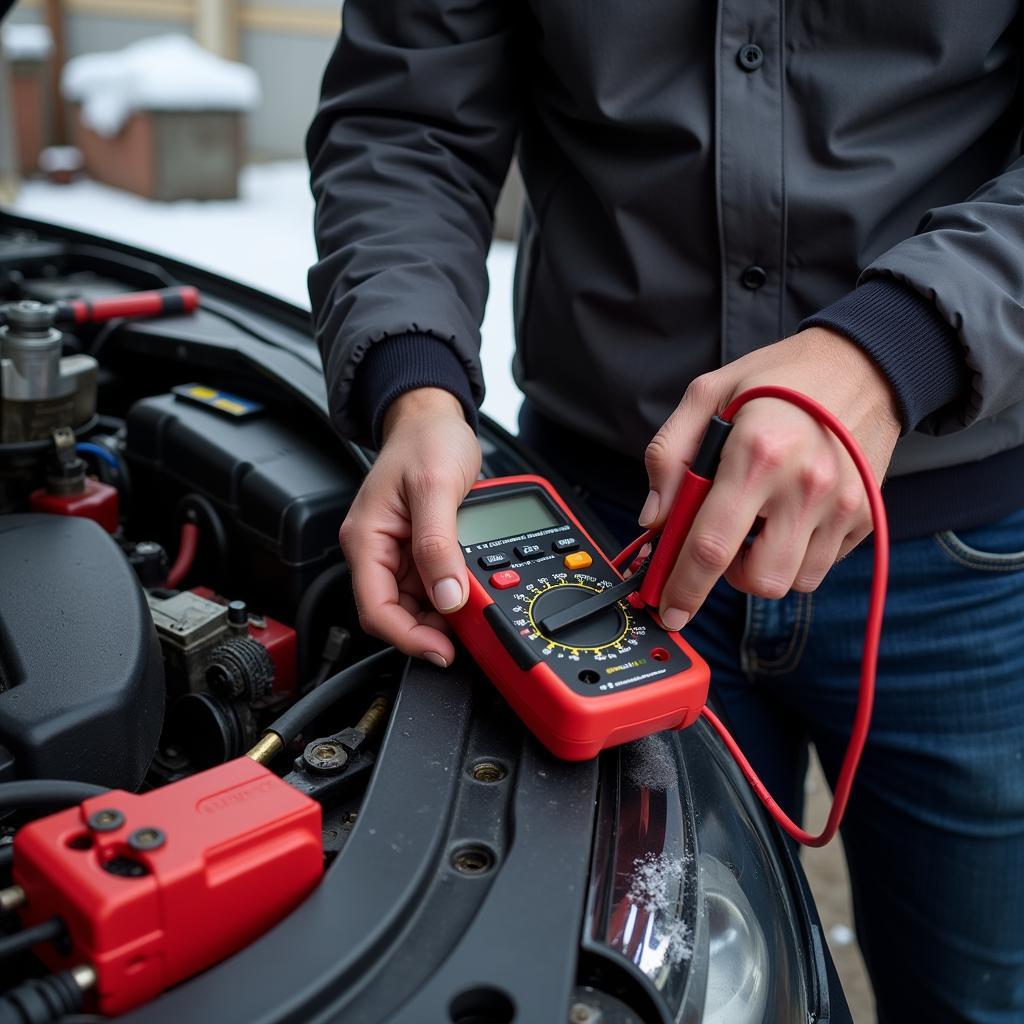Push start cars offer convenience and a sleek, modern feel. However, frigid temperatures can sometimes reveal a chilly reception to this technology. Many drivers find themselves stranded in the cold, wondering why their push-start ignition isn’t cooperating. This article will delve into the common Problems With Push Start Cars In The Cold and provide practical solutions to get you back on the road quickly.
Many factors can contribute to push start car problems in cold weather, ranging from simple battery issues to more complex key fob malfunctions. Understanding these issues is the first step to preventing and resolving them. One common culprit is a weakened battery. Just like our bodies feel the cold, car batteries struggle to perform in freezing temperatures. The chemical reactions within the battery slow down, reducing its ability to deliver the necessary power to start the engine. Similar to car starter problems symptoms, a weak battery can manifest in various ways, such as slow cranking or clicking sounds when you try to start the car.
Why Won’t My Push Start Car Start in the Cold?
Several reasons can explain why your push start car refuses to cooperate in the cold. One of the most common is a weak or dying 12-volt battery. Cold temperatures reduce battery capacity, making it harder to deliver the power needed for ignition. This issue is often compounded by parasitic drains, like interior lights left on, which further deplete the battery. Another potential issue lies with the key fob. The fob’s battery can also be affected by the cold, weakening its signal and preventing it from communicating with the car’s system. In other cases, the issue may not be with the key fob itself, but with the car’s key fob receiver. Extreme cold can interfere with the receiver’s ability to detect the fob’s signal, even if the fob’s battery is healthy.
Beyond the battery and key fob, there are other potential culprits. These include faulty starter motors, corroded connections, and even thick engine oil, which can put extra strain on the starter in cold conditions. This aligns with issues experienced with diesel car problems cold weather. Identifying the exact cause is crucial for implementing the correct solution.
How to Troubleshoot Problems with Push Start Cars in the Cold
Troubleshooting push start issues in cold weather requires a systematic approach. First, check the key fob battery. If it’s weak, replacing it is a simple and often effective solution. Next, try placing the key fob directly against the start button. This can sometimes bypass a weak signal. If the car still won’t start, consider jump-starting the vehicle. If the car starts after a jump, it’s a strong indication of a weak 12-volt battery.
 Replacing Key Fob Battery for Push Start Cars
Replacing Key Fob Battery for Push Start Cars
“A simple battery replacement can often save drivers a lot of time and frustration in the cold,” says John Smith, a certified automotive technician with over 20 years of experience. “It’s a preventative measure that everyone should consider before winter sets in.”
If a jump start doesn’t resolve the issue, the problem may lie with the starter motor, corroded connections, or other components. In such cases, it’s best to consult a qualified mechanic for further diagnosis and repair.
Preventing Problems with Push Start Cars in the Cold
Prevention is always better than cure, especially when it comes to car troubles in frigid temperatures. Keeping your car battery in good condition is paramount. Have it tested regularly, especially as winter approaches. Consider using a battery tender to maintain its charge, especially if you don’t drive frequently. Similar to problems with push button start cars, addressing potential issues early on can prevent more significant problems later.
 Car Battery Maintenance During Winter
Car Battery Maintenance During Winter
Furthermore, parking your car in a garage or covered area can help protect the battery and other components from the harsh effects of extreme cold. These preventative measures can also help with general cannot start car problem. “Parking in a garage can significantly extend the life of your car battery and minimize the risk of cold-weather starting issues,” adds Maria Garcia, a senior automotive engineer. “It’s a simple yet effective way to protect your vehicle during winter.”
Conclusion
Problems with push start cars in the cold can be frustrating, but understanding the common causes and implementing preventative measures can significantly reduce the likelihood of being stranded. Regular battery maintenance, proper key fob care, and protecting your car from extreme cold are essential steps. If you continue to experience problems, don’t hesitate to contact a qualified mechanic for professional assistance. For further reading on related car problems, you might find the article on common car heater problems helpful. Feel free to reach out to us at AutoTipPro for further assistance. You can reach us at +1 (641) 206-8880 or visit our office located at 500 N St Mary’s St, San Antonio, TX 78205, United States.





Leave a Reply